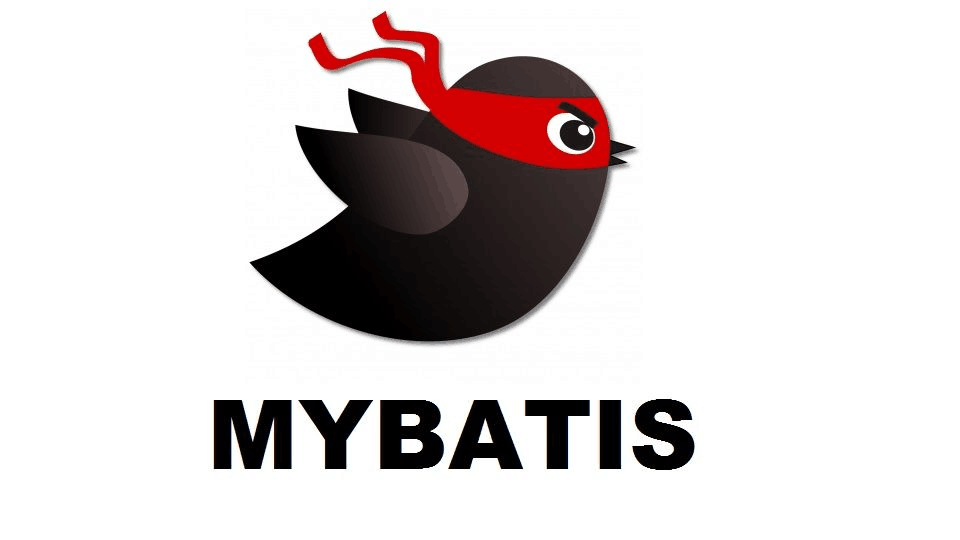从 Spring3.0,@Configuration 用于定义配置类,可替换 xml 配置文件,被注解的类内部包含有一个或多个被@Bean 注解的方法,这些方法将会被 AnnotationConfigApplicationContext 或 AnnotationConfigWebApplicationContext 类进行扫描,并用于构建 bean 定义,初始化 Spring 容器。也就是说使用了这个注解完全不需要我们手动去配置applicationContext.xml了
注意:@Configuration 注解的配置类有如下要求:
- @Configuration 不可以是 final 类型;
- @Configuration 不可以是匿名类;
- 嵌套的 configuration 必须是静态类。
@Configuation 加载 Spring 方法
@Configuration 配置 spring 并启动 spring 容器
@Configuration 标注在类上,相当于把该类作为 spring 的 xml 配置文件中的<beans>,作用为:配置 spring 容器(应用上下文)
1
2
3
4
5
6
7
8
9
10
11
12
13
14
15
16
17
18
19
20
| package com.ms.demo.configuration;
import org.springframework.context.annotation.Configuration;
@Configuration
public class TestConfiguration {
public TestConfiguration() {
System.out.println("TestConfiguration容器启动初始化。。。");
}
}
|
相当于 Spring 的 xml 配置文件:
1
2
3
4
5
6
7
8
9
| <?xml version="1.0" encoding="UTF-8"?>
<beans xmlns="http://www.springframework.org/schema/beans"
xmlns:context="http://www.springframework.org/schema/context"
xmlns:xsi="http://www.w3.org/2001/XMLSchema-instance"
xsi:schemaLocation="http://www.springframework.org/schema/beans http://www.springframework.org/schema/beans/spring-beans.xsd
http://www.springframework.org/schema/context http://www.springframework.org/schema/context/spring-context.xsd">
</beans>
|
主方法进行测试:
1
2
3
4
5
6
7
8
9
10
11
12
13
14
15
16
17
18
19
20
| import com.ms.demo.configuration.TestConfiguration;
import org.springframework.context.ApplicationContext;
import org.springframework.context.annotation.AnnotationConfigApplicationContext;
public class TestMain {
public static void main(String[] args) {
ApplicationContext context = new AnnotationConfigApplicationContext(TestConfiguration.class);
}
}
|
从运行主方法结果可以看出,spring 容器已经启动了:

@Configuration 启动容器+@Bean 注册 Bean,@Bean 下管理 bean 的生命周期
@Bean 标注在方法上(返回某个实例的方法),等价于 spring 的 xml 配置文件中的<bean>,作用为:注册 bean 对象
bean 类:
1
2
3
4
5
6
7
8
9
10
11
12
13
14
15
16
17
18
19
20
21
22
23
24
25
26
27
28
29
| package com.ms.demo.configuration;
public class TestBean {
private String username;
private String url;
private String password;
public void sayHello() {
System.out.println("TestBean sayHello...");
}
public String toString() {
return "username:" + this.username + ",url:" + this.url + ",password:" + this.password;
}
public void start() {
System.out.println("TestBean 初始化。。。");
}
public void cleanUp() {
System.out.println("TestBean 销毁。。。");
}
}
|
配置类:
1
2
3
4
5
6
7
8
9
10
11
12
13
14
15
16
17
18
19
20
21
22
23
24
25
26
27
28
29
| package com.ms.demo.configuration;
import org.springframework.context.annotation.Bean;
import org.springframework.context.annotation.Configuration;
import org.springframework.context.annotation.Scope;
@Configuration
public class TestConfiguration {
public TestConfiguration() {
System.out.println("TestConfiguration容器启动初始化。。。");
}
@Bean
@Scope("prototype")
public TestBean testBean() {
return new TestBean();
}
}
|
主方法测试类:
1
2
3
4
5
6
7
8
9
10
11
12
13
14
15
16
17
18
19
20
| package com.ms.demo.configuration;
import org.springframework.context.ApplicationContext;
import org.springframework.context.annotation.AnnotationConfigApplicationContext;
public class TestMain {
public static void main(String[] args) {
ApplicationContext context = new AnnotationConfigApplicationContext(TestConfiguration.class);
TestBean tb = (TestBean) context.getBean("testBean");
tb.sayHello();
}
}
|
结果:

注:
(1)、@Bean 注解在返回实例的方法上,如果未通过@Bean 指定 bean 的名称,则默认与标注的方法名相同;
(2)、@Bean 注解默认作用域为单例 singleton 作用域,可通过@Scope(“prototype”)设置为原型作用域;
(3)、既然@Bean 的作用是注册 bean 对象,那么完全可以使用@Component、@Controller、@Service、@Ripository 等注解注册 bean,当然需要配置@ComponentScan 注解进行自动扫描。
@Bean 下管理 bean 的生命周期
可以使用基于 Java 的配置来管理 bean 的生命周期。@Bean 支持两种属性,即 initMethod 和destroyMethod,这些属性可用于定义生命周期方法。在实例化 bean 或即将销毁它时,容器便可调用生命周期方法。生命周期方法也称为回调方法,因为它将由容器调用。使用 @Bean 注释注册的 bean 也支持 JSR-250 规定的标准 @PostConstruct 和 @PreDestroy 注释。如果您正在使用 XML 方法来定义 bean,那么就应该使用 bean 元素来定义生命周期回调方法。以下代码显示了在 XML 配置中通常使用 bean 元素定义回调的方法。
1
2
3
4
5
6
7
8
9
10
11
12
13
14
15
16
17
18
19
20
21
22
23
24
25
26
27
28
29
30
| package com.ms.demo.configuration;
import org.springframework.context.annotation.Bean;
import org.springframework.context.annotation.ComponentScan;
import org.springframework.context.annotation.Configuration;
import org.springframework.context.annotation.Scope;
@Configuration
public class TestConfiguration {
public TestConfiguration() {
System.out.println("TestConfiguration容器启动初始化。。。");
}
@Bean(name="testBean",initMethod="start",destroyMethod="cleanUp")
@Scope("prototype")
public TestBean testBean() {
return new TestBean();
}
}
|
启动类:
1
2
3
4
5
6
7
8
9
10
11
12
13
14
15
16
17
18
19
20
21
22
23
24
25
26
27
28
29
30
31
32
| import com.ms.demo.configuration.TestBean;
import com.ms.demo.configuration.TestConfiguration;
import org.springframework.context.ApplicationContext;
import org.springframework.context.annotation.AnnotationConfigApplicationContext;
public class TestMain {
public static void main(String[] args) {
ApplicationContext context = new AnnotationConfigApplicationContext(TestConfiguration.class);
TestBean tb = (TestBean) context.getBean("testBean");
tb.sayHello();
System.out.println(tb);
TestBean tb2 = (TestBean) context.getBean("testBean");
tb2.sayHello();
System.out.println(tb2);
}
}
|
结果:

@Configuration 启动容器+@Component 注册 Bean
Bean 类:
1
2
3
4
5
6
7
8
9
10
11
12
13
14
15
16
17
18
19
20
21
22
23
24
25
26
27
28
29
30
31
32
33
| package com.ms.demo.configuration;
import org.springframework.stereotype.Component;
@Component
public class TestBean {
private String username;
private String url;
private String password;
public void sayHello() {
System.out.println("TestBean sayHello...");
}
public String toString() {
return "username:" + this.username + ",url:" + this.url + ",password:" + this.password;
}
public void start() {
System.out.println("TestBean 初始化。。。");
}
public void cleanUp() {
System.out.println("TestBean 销毁。。。");
}
}
|
配置类:
1
2
3
4
5
6
7
8
9
10
11
12
13
14
15
16
17
18
19
20
21
22
23
24
25
| package com.ms.demo.configuration;
import org.springframework.context.annotation.Bean;
import org.springframework.context.annotation.ComponentScan;
import org.springframework.context.annotation.Configuration;
import org.springframework.context.annotation.Scope;
@Configuration
@ComponentScan(basePackages = "com.ms.demo.configuration")
public class TestConfiguration {
public TestConfiguration() {
System.out.println("TestConfiguration容器启动初始化。。。");
}
}
|
主方法测试获取 bean 对象:
1
2
3
4
5
6
7
8
9
10
11
12
13
14
15
16
17
18
19
20
21
22
| import com.ms.demo.configuration.TestBean;
import com.ms.demo.configuration.TestConfiguration;
import org.springframework.context.ApplicationContext;
import org.springframework.context.annotation.AnnotationConfigApplicationContext;
public class TestMain {
public static void main(String[] args) {
ApplicationContext context = new AnnotationConfigApplicationContext(TestConfiguration.class);
TestBean tb = (TestBean) context.getBean("testBean");
tb.sayHello();
}
}
|
sayHello()方法都被正常调用。

使用 AnnotationConfigApplicationContext 注册 AppContext 类的两种方法
- 配置类的注册方式是将其传递给
AnnotationConfigApplicationContext 构造函数

AnnotationConfigApplicationContext 的register 方法传入配置类来注册配置类

@Configuation 总结
@Configuation 等价于<Beans></Beans>
@Bean 等价于<Bean></Bean>
@ComponentScan 等价于<context:component-scan base-package="com.ms.demo"/>















